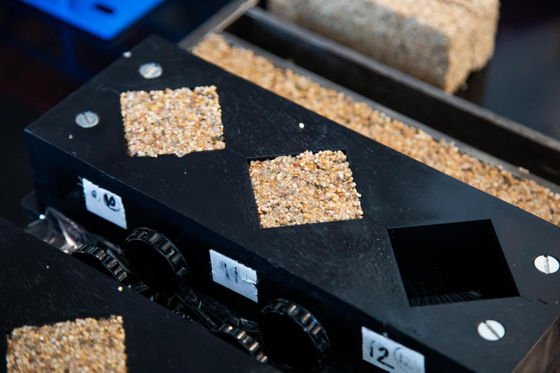`` Living building materials '' that photosynthetic bacteria increase in strength are developed

A research team
Building materials come alive with help from bacteria | CU Boulder Today | University of Colorado Boulder
https://www.colorado.edu/today/2020/01/15/building-materials-come-alive
Scientists Create “Living Concrete” That Can Heal Itself
https://futurism.com/the-byte/scientists-create-living-concrete-heal-itself
“Living concrete” is an interesting first step | Ars Technica
https://arstechnica.com/science/2020/01/living-concrete-is-an-interesting-first-step/
According to the announcement, some of the strength of the concrete is due to the carbonate formed during the curing process. Carbonate is also found in the shells of aquatic organisms, so the idea of 'using biological knowledge in materials science' is gaining attention.
The research team focused on Synechococcus , a kind of cyanobacterium that performs photosynthesis. Synechococcus absorbs carbon dioxide from air through photosynthesis to produce calcium carbonate, a material that has the advantage of naturally producing carbonates without any additional carbon.
The research team created 'living building materials' that mixed sand with the gelatin that Synechococcus inhabits as cement . This 'living building material' is calcified by calcium carbonate generated by Synechococcus and hardens to the same strength as mortar . Also, among the 'living building materials' placed in an environment with a humidity of 50% or more, Synechococcus will continue to survive for more than 30 days, so part of the 'living building materials' will be split into new gelatin and sand. By mixing in, it is possible to increase 'living building materials'. In addition, Synechococcus performs photosynthesis in 'living building materials', so it can capture carbon dioxide from the air. The media reported the research results as 'living concrete.' The following is the real thing.

On the other hand, John Timer, of Ars Technica, who has been conducting biology research for more than 15 years at research institutes such as Berkeley University and Cornell University, said, `` I heard this study was 'living concrete'. It's not something like that. ' The 'living building material' in this study is elastic and needs to be dried to increase its strength and be used like concrete. During this drying process, Synechococcus, the core of the concept of 'living', dies. In other words, the two states of 'living' and 'concrete' cannot be realized at the same time.
`` The developed objects are described in the dissertation as 'Living building materials', and the phrase 'living concrete' quoted by the press was present in the press release, he said. Nowhere in the dissertation. ' The research team also states in the paper that 'living building materials' are not a wide replacement for mixed cement. According to Timer, there is still much room for improvement, such as `` selecting new bacteria that live longer in the material after it has dried and solidified, '' and said the study was `` a very early work on interesting subjects. '' Commented.
Related Posts:
in Science, Posted by darkhorse_log







